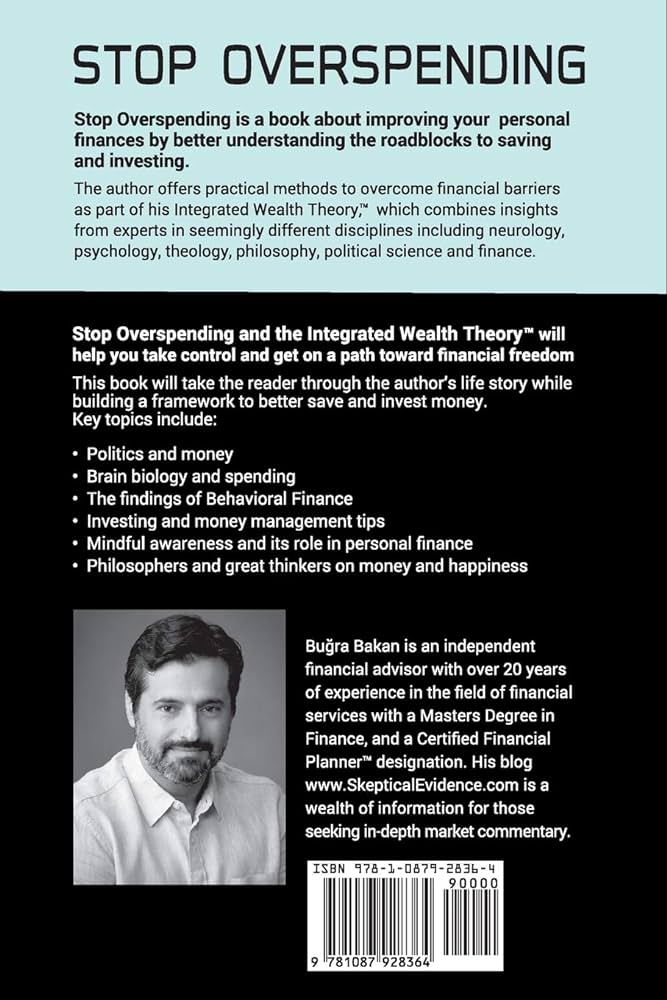9 Best Books on Investing: Master Strategies and Insights from Financial Experts
Investing can feel like navigating a maze, but the right books can light your path. Whether you’re a seasoned investor or just dipping your toes into the financial markets, the wisdom found in the pages of well-regarded investing books is invaluable. These books can offer you strategies, insights, and the confidence to make informed decisions.
In this article, you’ll discover nine of the best books on investing that have stood the test of time. From classic texts to modern guides, these selections will help you understand market dynamics, develop sound investment strategies, and ultimately grow your wealth. Dive in and find the perfect read to elevate your investing game.
Exploring Different Investment Strategies
Understanding various investment strategies can help you make informed decisions and maximize your returns. Let’s dive into three key approaches that many successful investors swear by.
Fundamental Analysis
Fundamental analysis focuses on evaluating a company’s financial health and intrinsic value. You’ll look at financial statements, earnings, and market position to determine whether a stock is undervalued or overvalued. By studying factors like revenue, profit margins, and debt levels, you can make educated guesses about a company’s future performance. Books like “The Intelligent Investor” by Benjamin Graham provide deep insights into this method.
Technical Analysis
Technical analysis involves analyzing statistical trends from trading activity, such as price movement and volume. You’ll use charts and other tools to identify patterns and predict future price behavior. This strategy relies on historical data, helping you decide when to buy or sell stocks. If you want to dive deeper, “Technical Analysis of the Financial Markets” by John Murphy is a must-read.
Value Investing
Value investing, popularized by Warren Buffett, emphasizes buying undervalued stocks with strong fundamentals. You’ll seek companies that are trading below their intrinsic value, offering a margin of safety with high long-term growth potential. You’ll often look for indicators like low P/E ratios and strong earnings. “The Little Book That Still Beats the Market” by Joel Greenblatt offers a compelling introduction to this strategy.
These strategies vary in approach but share the common goal of helping you make smarter investment choices. Each book mentioned will guide you through the intricacies of these methods, arming you with knowledge to succeed in the market.
1. “The Intelligent Investor” by Benjamin Graham
Regarded as the bible of investing, “The Intelligent Investor” by Benjamin Graham provides a solid foundation for aspiring and seasoned investors alike.
Overview of Key Concepts
Graham introduces the concept of value investing. He emphasizes looking at a company’s intrinsic value instead of its market price. The book explains margin of safety, suggesting that buying stocks for less than their intrinsic value mitigates risk. Graham also advocates for a disciplined investment approach, ignoring market noise.
Why It’s Essential for Value Investors
“The Intelligent Investor” is essential for value investors because it highlights long-term strategies over short-term gains. Graham’s teachings help you develop patience, a vital trait for value investing. The book’s principles remain relevant, guiding you through market fluctuations with sound advice.
2. “Common Stocks and Uncommon Profits” by Philip Fisher
Written by Philip Fisher, “Common Stocks and Uncommon Profits” stands out as a timeless investment classic. Fisher’s insights have shaped modern investing for decades.
Key Investment Philosophies
Fisher introduces the concept of qualitative analysis. He emphasizes understanding a company’s management, competitive position, and market potential. Fisher’s “15 Points to Look for in a Common Stock” are legendary. These are essential factors in evaluating investments, like the competence of management and the company’s growth plans. He also champions investing for the long term, advocating for holding stocks to leverage compound growth.
How This Book Influences Modern Investing
Fisher’s work has profoundly impacted both individual investors and financial professionals. His approach to focusing on qualitative factors complements the quantitative analysis, leading to more holistic investment strategies. You’ll notice many successful investors, including Warren Buffett, praise Fisher’s methods and integrate them into their investing practices. Modern investors use his philosophies to identify high-quality, growth-oriented stocks, blending them with other analytical tools for robust decision-making.
3. “A Random Walk Down Wall Street” by Burton Malkiel
Burton Malkiel’s “A Random Walk Down Wall Street” is a must-read for both novice and experienced investors. This seminal book delves into the strategies and principles that have shaped modern investment thought.
The Case for Efficient Market Hypothesis
Malkiel’s book champions the Efficient Market Hypothesis (EMH). This theory suggests that stock prices always incorporate and reflect all relevant information. Therefore, it’s impossible to consistently outperform the market through expert stock selection or market timing. EMH encourages you to reconsider any belief that you can predict market movements reliably.
Implications for Personal Investing Strategies
Understanding EMH significantly impacts personal investing strategies. Malkiel argues for passive investment strategies, such as buying and holding a diversified portfolio of low-cost index funds. By doing so, you minimize the frictions and costs associated with frequent trading and increase your chances of achieving market-average returns. This approach can be particularly attractive if you’re looking for a straightforward, hands-off investment strategy.
4. “The Little Book of Common Sense Investing” by John C. Bogle
John C. Bogle, the founder of Vanguard Group, offers timeless advice on investing. His book simplifies the concept of index fund investing, making it accessible to everyone.
Advantages of Index Fund Investing
Bogle champions index funds for their ability to deliver market returns at low costs. He highlights how these funds reduce fees and outperform many actively managed funds over the long term. By investing in a broad index, you achieve diversification, minimizing risk. Index funds are also tax-efficient because of their low turnover rates. The simplicity and minimal costs of index funds make them ideal for both novice and seasoned investors.
Bogle’s Critique of Wall Street
Bogle criticizes Wall Street for prioritizing profits over investors’ interests. He points out that high management fees and frequent trading erode returns. Wall Street’s short-term focus contrasts with Bogle’s long-term investment philosophy. He argues that a passive approach through index funds is more effective for wealth accumulation. Bogle’s critique underscores the need for transparency and cost-efficiency in the financial industry.
5. “One Up On Wall Street” by Peter Lynch
Peter Lynch’s “One Up On Wall Street” provides practical advice on how individual investors can outperform market professionals. Lynch shares his experience managing Fidelity’s Magellan Fund to help readers identify winning stocks using everyday insights.
How to Use What You Already Know to Make Money
Leverage your everyday experiences to spot investment opportunities. Lynch emphasizes that you’re often surrounded by lucrative ideas in your daily life. For instance, notice which products are gaining consumer popularity and consider their parent companies. This practical approach can give you a unique edge over institutional investors.
Lynch’s Approach to Investing in Stocks
Focus on companies you understand. Lynch advises investing in businesses with a straightforward model. He categorizes stocks into six types: slow growers, stalwarts, fast growers, cyclicals, asset plays, and turnarounds. Each type has distinct evaluation criteria and growth potential. This systematic categorization helps you build a diversified portfolio tailored to different market conditions.
6. “Rich Dad Poor Dad” by Robert Kiyosaki
Rich Dad Poor Dad” by Robert Kiyosaki is a groundbreaking book that challenges traditional perspectives on money and investing.
The Importance of Financial Education
Kiyosaki stresses the critical role of financial education in achieving financial freedom. He compares the advice from his “poor dad” (his biological father) and his “rich dad” (his best friend’s father), highlighting differing philosophies on education, work, and wealth. The book encourages you to build financial literacy to make informed investment decisions and understand assets versus liabilities.
Investing Beyond the Stock Market
Kiyosaki broadens the scope of investing by emphasizing real estate, entrepreneurship, and creating passive income streams. He advocates for diversifying investments to reduce risk and maximize returns. The concept of working to learn, not just to earn, empowers you to focus on acquiring skills and knowledge that contribute to financial independence.
7. “Think and Grow Rich” by Napoleon Hill
“Think and Grow Rich” by Napoleon Hill is a classic in personal development and wealth creation. It’s not just about money; it’s about cultivating a mindset for success that transcends investing.
Principles of Success in Investing
Hill outlines 13 principles, starting with Desire. He argues that a burning desire is crucial for achieving any financial goal. Next, Faith involves believing in your success long before it materializes. Autosuggestion ties these elements together by embedding your goals deeply in your subconscious. Specialized Knowledge is another key; it emphasizes learning specific investment skills. Planning involves creating detailed, actionable plans and acting on them. Finally, Persistence ensures you stick to your investment strategy despite setbacks.
The Psychological Side of Investing
Hill delves into the psychological aspects that drive investment success. He emphasizes the importance of mastering Fear of Failure, noting that fear can paralyze decision-making. Positivity impacts your investment decisions by fostering a mindset that sees opportunities rather than obstacles. The concept of the Mastermind Group involves surrounding yourself with like-minded, success-driven individuals who provide support and accountability. Visualization is a critical tool; picturing your investment goals achieved reinforces your commitment.
8. “The Essays of Warren Buffett” by Lawrence Cunningham
Wisdom from the Greatest Investor
Dive into Warren Buffett’s world through this collection of essays. You’ll explore his investment principles, which are grounded in value investing and long-term thinking. Buffett’s approachable writing and real-life examples make complex financial concepts easy to grasp.
Lessons on Corporate Governance and Investment Philosophy
Learn about corporate governance directly from one of the best in the business. Buffett emphasizes the importance of managerial integrity and shareholder-centric policies. These essays provide invaluable lessons on building a solid investment philosophy grounded in ethical and sustainable business practices. You’ll gain insights into evaluating companies beyond financial statements, focusing on leadership and strategic vision.
9. “Security Analysis” by Benjamin Graham and David Dodd
The Bible of Value Investing
Often referred to as the blueprint for value investing, “Security Analysis” by Benjamin Graham and David Dodd lays the groundwork for investing in undervalued stocks. You’ll find that the book emphasizes the importance of thorough financial analysis and strong principles. This timeless resource has guided several generations of successful investors with its profound investment strategies and principles.
Analytical Strategies and Frameworks
You’ll appreciate how “Security Analysis” offers detailed analytical strategies and frameworks. Graham and Dodd provide methods to assess a company’s intrinsic value, evaluate financial statements, and identify investment opportunities with precision. Real-world examples illustrate their concepts, allowing you to apply these techniques in your investment endeavors. Explore comprehensive chapters that cover income statements, balance sheets, and cash flow analyses to strengthen your investment acumen.
Conclusion
Diving into these nine books equips you with a wealth of knowledge and a solid foundation in investing. You’ll gain insights into various strategies, from value investing to technical analysis, and understand the importance of financial education and diversification. By studying the principles and real-world examples presented, you can develop a robust investment approach tailored to your goals. Whether you’re new to investing or looking to refine your skills, these books offer invaluable guidance to help you navigate the financial markets with confidence and achieve long-term success.






